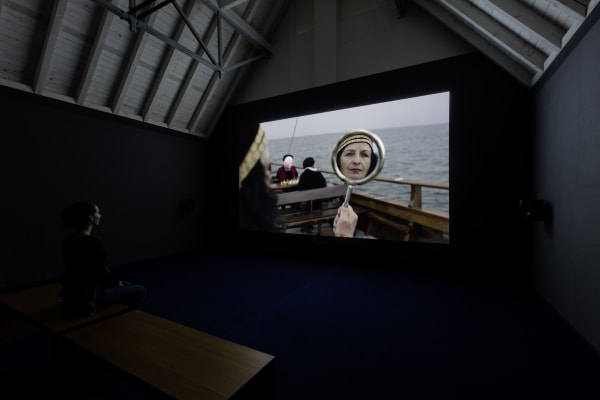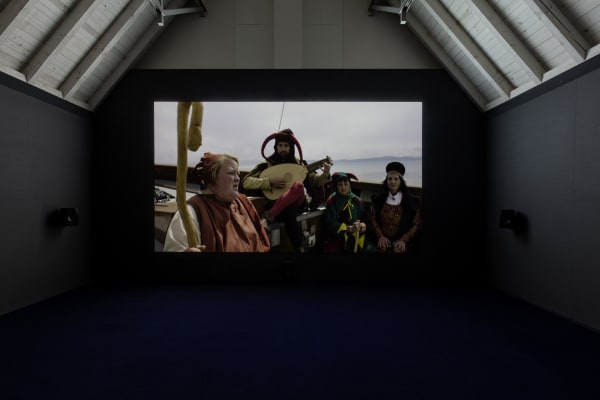Javier Telléz: Das Narrenschiff auf dem BodenseeKunstmuseum Thurgau, Kartause Ittigen, Warth, Switzerland
Invited by the Kunstmuseum Thurgau to realize a film on location, Javier Téllez linked local incidents with world history to form a net that he cast, as it were, on Lake Constance: the nodal point is the visit of the now famous philosopher Michel Foucault in 1954 to the psychiatric clinic in Münsterlingen, where he met Ludwig Binswanger because of the preface for his essay "Dream and Existence".
Drawing from these diverse sources, Javier Tellez and a diverse film crew created a contemporary vision of the Ship of Fools motif. Together with people with psychiatric experience, texts about madness and society were formulated. Their touching reflections on being, appearances and the state of the world were set to music by the group under the guidance of musician Johannes Ötzbrugger, who accompanied words and singing with the lute - and the actors on their magical journey across Lake Constance.
The set was also developed in a joint process. Together with art therapist Lenka Roth and renowned mask maker Verena Steiger from Schwyz, masks were created in the Kreuzlingen Open Studio using traditional wax techniques, inspired by photos of the Münsterlingen carnival. Historical costumes were procured from a theater trove, and a replica of a medieval lädine served as the main stage for filming.
History and painting, music and masks became the starting coordinates for a dreamlike journey into the unknown. Much remains open in the poetically narrative film: Does the ship set course for "Narragonia" or does it escape the world in which normality and madness increasingly blur? The boat on the water is not only a symbol for the state of today's world, but at the same time a sound and resonance body for the many egos with which modern man travels and which keep him afloat.





